27 September 2025
I depart the massive, bustling megatropolis of Tokyo. I won’t complain, as my destination for the day includes another icon of Japan: Mt. Fuji. I’ve jetted past the mountain in the past, enjoying spectacular views of snow-capped peaks. Hopefully, the view will be as clear from the ground.
After a breakfast, we board a comfortable bus. Our destination, some 50 miles southwest, is the city of Hakone.
Roadway Etiquette
Driving in Japan is a mix of order, patience, and occasional terror. Cars drive on the left side of the road, which is enough to scramble the brain of anyone used to the right. Streets can be incredibly narrow—sometimes looking more like sidewalks. Cars somehow manage to squeeze through, mirrors folded like ears tucked back in fear. (I love that many cars now electronically fold mirrors. Must save a lot of them.)
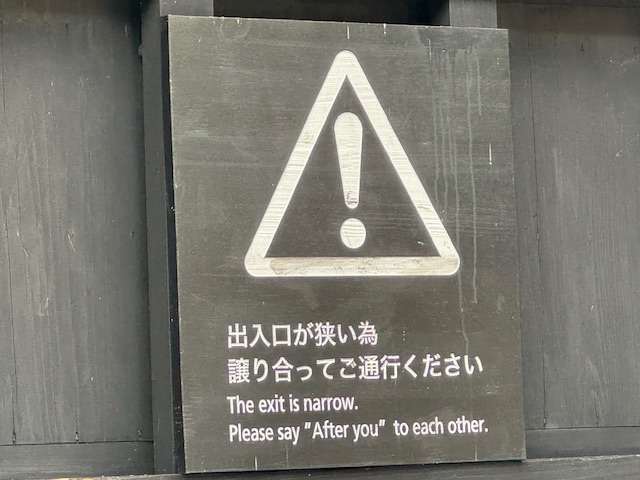
Japanese drivers are generally polite and cautious, but the system has quirks.
Gas stations employ attendants who bow you in and out, toll roads demand exact cash or an electronic pass, and parking lots often feel like a puzzle game with mechanical lifts and rotating platforms (same exists for bicycles). Speed limits are lower than in many countries (about 50mph on highways), and traffic can be heavy. I also note that a Japanese driver would never deem it necessary to honk the horn at someone nor make a change sans turn signal.
Tokaido Highway
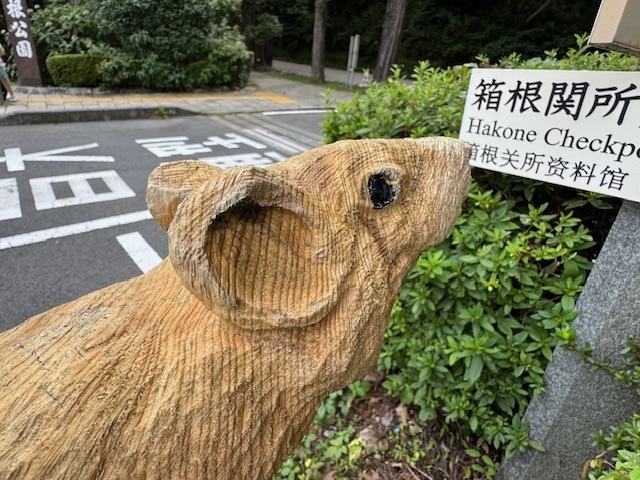
We stretch our legs by walking a section of the old Tokaido Highway, once the main road connecting Edo and Kyoto. The best section is lined with centuries old towering Japanese cedar trees providing shade for the weary traveler. Using one’s imagination, perhaps we follow in the steps of the samurai, merchants, and maybe even a few runaway geishas treading this same route.
The path still has stretches of original stone paving, which look charming in photos but in reality are uneven ankle-twisters. I’m told the samurai trod these paths in wooden sandals. I imagine Edo-era travelers were either very sure-footed or just constantly limping.
Hakone and Checkpoint Museum
Hakone once was the checkpoint controlling traffic along the Tokaido, the main route linking Tokyo with Kyoto during the Edo Period (1603-1868). Here, we visit the Checkpoint Museum where the shogunate once kept a suspiciously nosy eye on travelers. Originally, this complex acted as the main inspection facility, established in 1619 to help keep the city of Edo (Tokyo) safe. It also served to control the flow of people and goods in and out Edo.
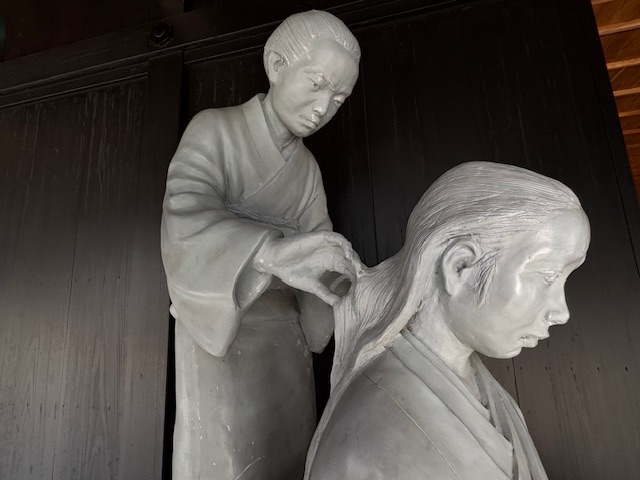
The key to controlling the shoguns was to control their women and children. Women had to uncoil their hair and submit to a search when on the highway.
The wood structures, reconstructed in 2007, appear much as they did 400 years ago. The complex includes gates, guardhouses, and a lookout tower. A small prison housed those unfortunates who broke the rules. A museum exhibits period artifacts from weapons to furniture.
An indoor workshop offers demonstrations of traditional mosaic woodworking called Yosegi. Elaborate geometric patterns and natural colors and grains of various wood types result in beautifully crafted pieces.
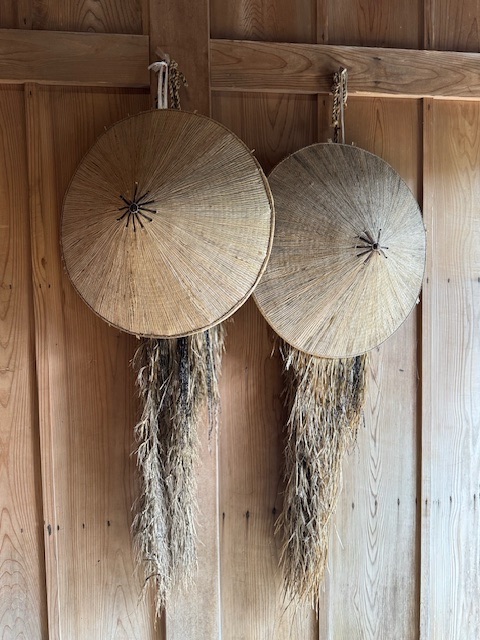
Always, there is the opportunity to shop for examples. Some of the puzzle boxes are quite interesting and very expensive.
Lake Ashi
Hakone overlooks shimmering Lake Ashi. Framed by rolling green hills and, on a clear day, Mount Fuji looms like a celebrity in the background. It’s one of Japan’s most photographed spots. Today, Fuji is shy, hiding behind a mass of clouds. Only her skirts are exposed.
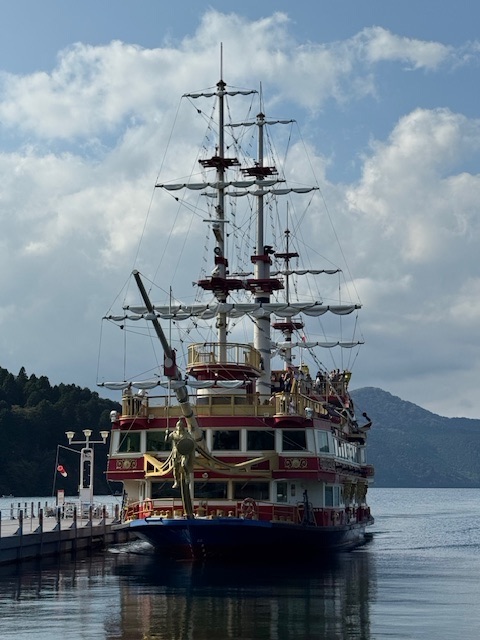
The lake itself was formed thousands of years ago after a volcanic eruption. Today, its calm, crystal clear waters host tourist sightseeing boats shaped like pirate ships. Go figure.
Our 30-minute cruise takes us around the lake and along its beautiful shores.
Nature at Its Best
The Hakone area exudes beautiful, tranquil nature. Yes, there are many visitors, but one can hardly blame them for being here. An additional highlight, other than nature walks and boat cruises, is the series of ropeways and cable cars that travel above the valleys and trees of the region. Riding above the peaks of Hakone Mountain feels like being slowly lifted into heaven.
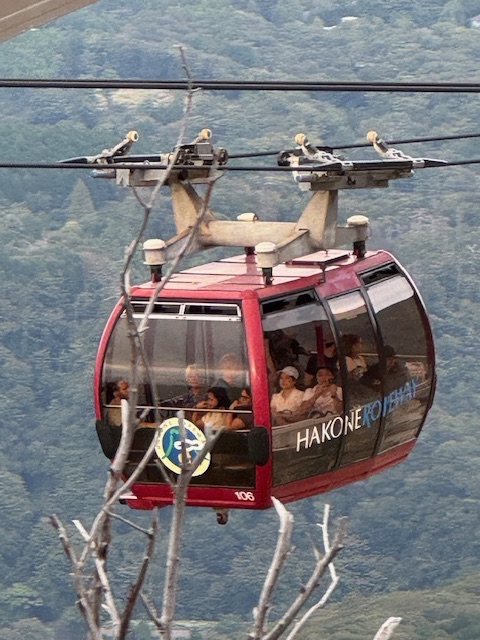
A gondola glides above steep valleys and lush forests, giving one wide-open views of Lake Ashi sparkling below. Dark clouds and low mountains dominate the horizon.
Cable and Ropeways
The best cable ride in the area leaves from the Tōgendai Station on Lake Ashi. It glides for 2.5 miles through quiet Ubako Station. Midway, you pass through Owakudani Station and over the “Great Boiling Valley,” where steam vents hiss, sulfur hangs in the air, and you half expect a dragon to crawl out of the volcanic rock.

The smell is… let’s call it “memorable.” It’s equal parts scenic and surreal—a mix of natural beauty, geological drama, and just a hint of egg-scented sulfur to remind you it’s all very real.
In Owakudani, the big attraction is the black eggs (kuro-tamago)—hard-boiled in the hot sulfur springs. Legend says eating one adds seven years to your life (eat two and you’re practically immortal). None were seen perking so we moved on.
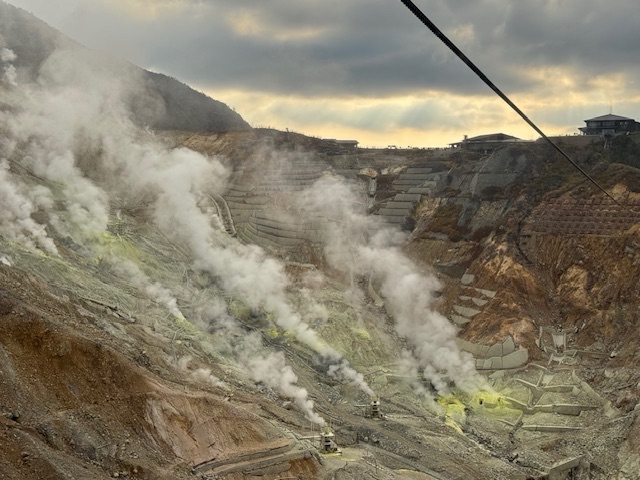
Sōunzan Station rests at about 2500 feet and could be a destination in itself. The area itself is quiet, with mountain views and fresh air. However, we continue another 1.2 miles over the town through five additional stations, ultimately exiting at the Gora Station. This is not just a tourist ride as it also represents public transport for locals.
Overnight Hakone
It would be easy to spend a few days in this area. The combination of lake, mountains, trails, and on a good day, Mount Fuji, makes it a spectacular respite from the bustle of Tokyo.
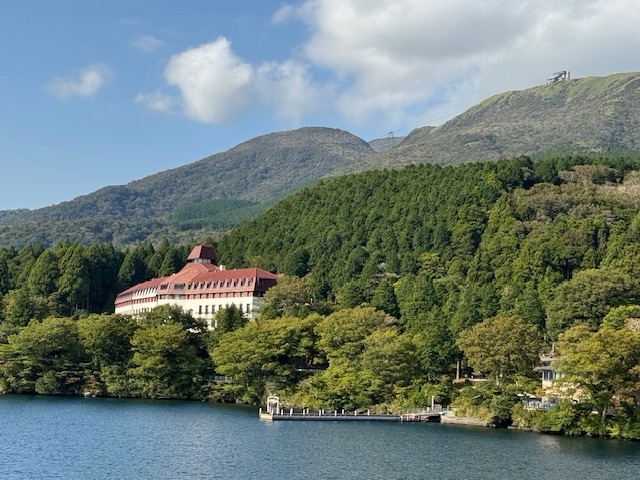
Following our long day with nature, we arrive at Hotel de Yama. It is a lovely modern hotel on the shores of Lake Ashi. Built in 1948, the building was originally the villa of Baron Koyata Iwasaki, whose uncle is Yataro Iwasaki, the founder of Mitsubishi.
The gardens and views are outstanding. While the Koshu Valley to the north of Mt. Fuji is known for white wine, I have yet liked it much. Instead, I enjoy a pleasant room, fancy dinner and a huge Sapporo.

Good enough for the Baron, good enough for me.
Kanpai!
0 Comments